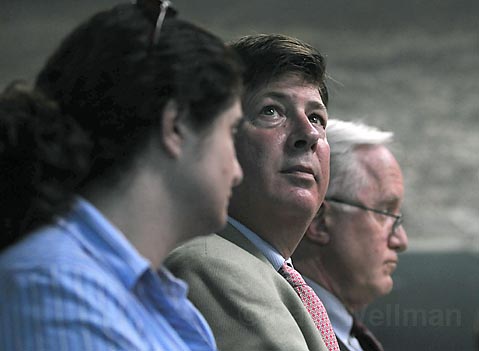Veronica Meadows a Go : for Now
City Council Greenlights Housing

After years of debate on the subject, the Santa Barbara City Council voted 5-2 on Tuesday night to oppose a joint appeal by the Citizens’ Planning Association (CPA) and the Urban Creeks Council (UCC) that would have prevented landowner Mark Lee from building 25 homes in his proposed Veronica Meadows development, located near the corner of Las Positas Road and Cliff Drive. The vote also included an annexation of the property-which currently falls under county jurisdiction-into the City of Santa Barbara.
It was a tedious back-and-forth before the dais, with each side of the debate weighing in with more and more compelling evidence. Those in favor of the new neighborhood praised Lee’s promises to restore area creeks, add pedestrian paths from an entrance near Elings Park to Alan Road, and install a roundabout at the intersection of Cliff Drive and Las Positas Road. The project’s detractors, however, opined that these proposed improvements were misleading, and that a proper assessment of feasible project alternatives had not yet been completed.
In the end, however, it was the desire of several councilmembers to ensure development that delivered a range of community benefits, coupled with a thorough legal analysis by Councilmember Iya Falcone-who is an attorney-that brought the council to its decision. Councilmembers Helene Schneider and Das Williams, as they have in the past, voted in opposition to Veronica Meadows, on the grounds that the proposal has multiple unmitigatable environmental impacts related to the riparian corridor along Arroyo Burro Creek and traffic at the intersection of Cliff Drive and Alan Road.
After being approved by the City Council in December 2006, Lee’s plan was halted by a ruling by Superior Court Judge Thomas Anderle last November when CPA and UCC brought suit against the project. As proposed, Lee’s development included a bridge across Arroyo Burro Creek, which had been designated an unmitigatable impact. Two alternatives to the bridge existed, but Lee’s attorney, Steve Amerikaner, said that those alternatives would make the proposed riparian and community improvements impossible. Anderle’s ruling faulted the city’s lack of adherence to the procedures set forth by the California Environmental Quality Act (CEQA), which states that in the case of unmitigatable environmental impacts, the alternatives must be found infeasible before a project can be approved. In such a case, Anderle said, the council could use its discretion to find overriding community benefits to allow the project despite unavoidable impacts.
Many Alan Road residents were on hand, complaining that overflow parking from nearby Hendry’s Beach makes parking bad enough on their street already. City staff nonetheless supported the project, saying it was consistent with the city’s annexation policy, because of the safer beach access it would provide pedestrians and cyclists traveling through Elings Park from the Westside, and because the plan includes creek restoration.
Environmentalists, however, were skeptical of whether Lee’s restoration plan constituted an environmental upgrade. “I don’t support this creek restoration because it’s designed to protect the homes from erosion, not to protect the creek,” said Brian Trautwein, one of the founders of UCC. Others, such as Eddie Harris of the Santa Barbara Urban Creeks Council, objected to the project’s lack of a comprehensive watershed analysis. Some called Amerikaner’s presentation of the project misleading, saying that although most of the property’s 50-plus acres are designated “public open space,” much of this land is impossible to build on due to topographical features.
Project opponents also took issue with the fact that a smaller development alternative wasn’t examined, being dismissed offhand as financially infeasible, but Mayor Blum opined that the city does not have the right to determine how much profit a developer can make. “I don’t like looking in other peoples’ checkbooks, and I don’t think the city should be doing that,” she said.
Although the fate of Veronica Meadows seems to have been decided for the time being, the consensus on the dais was that the development will most likely end up in court again.



